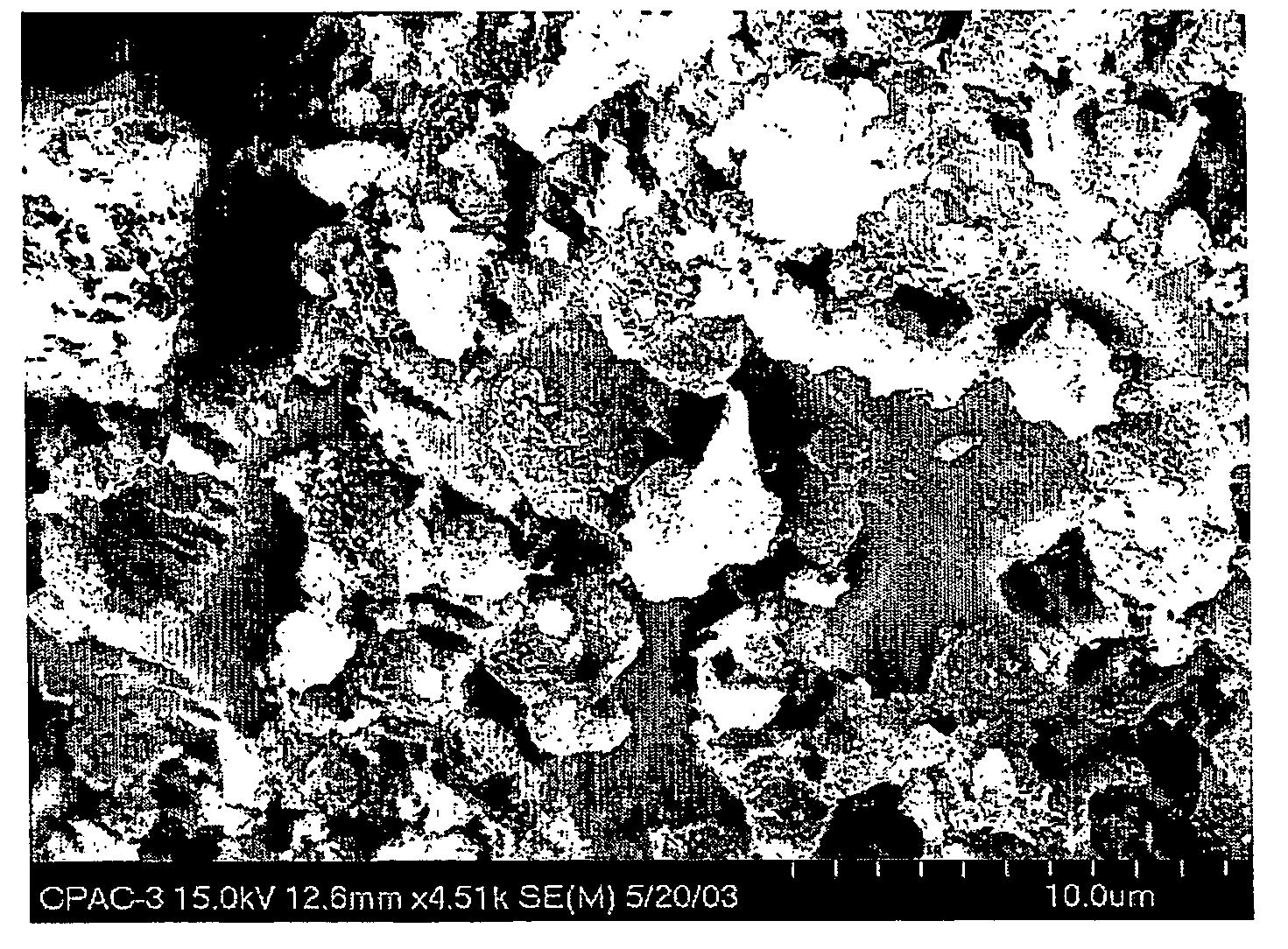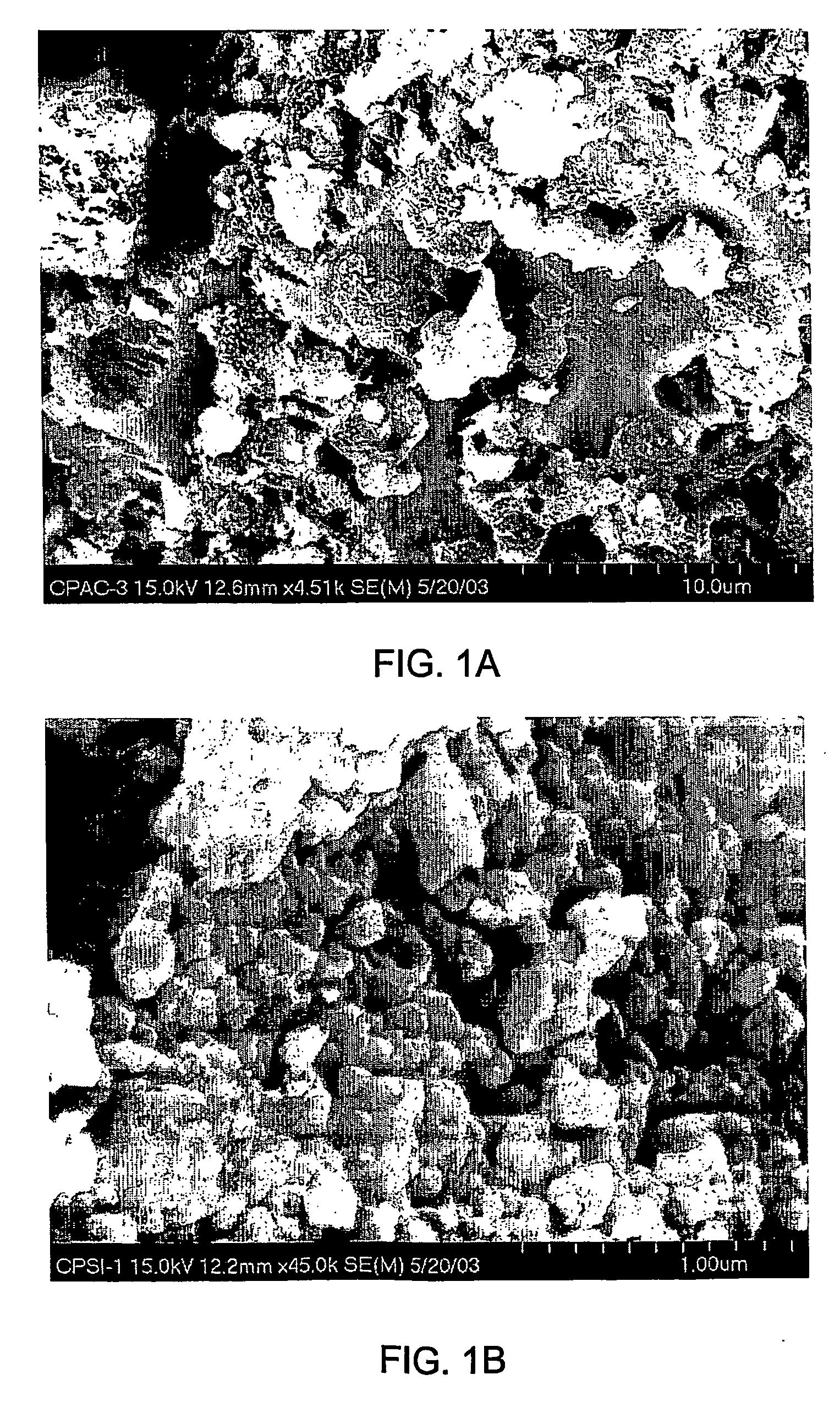Catalyzed dissolution of copper from sulfur-containing copper minerals
a technology of catalyst and copper, which is applied in the direction of copper compounds, process efficiency improvement, chemistry apparatus and processes, etc., can solve the problems of limiting the widespread use of copper, not being able to achieve more than 20%, and not being able to agree on the nature of sulfur associated with copper
- Summary
- Abstract
- Description
- Claims
- Application Information
AI Technical Summary
Benefits of technology
Problems solved by technology
Method used
Image
Examples
example i
[0025] As discussed, the formation of a passive sulfur layer decreases the dissolution of copper from chalcopyrite significantly when leaching is conducted in acidic pH. In order to test that and to get baseline data, chalcopyrite leaching experiments were conducted using ferric as a lixiviant in the absence and presence of different salts. Experimental results are given in Table 1.
TABLE 1Leaching of Chalcopyrite with Ferric Lixiviants(200 mesh size, Temp. 50° C.)% Copper% CopperRecoveryRecoveryafter 15 hrs.after 72 hrs.ConditionsLeachingLeaching6 gm / liter chalcopyrite8.414.510 gm / liter ferric-chloride1.3 pH using H2SO46 gm / liter chalcopyrite10.719.110 gm / liter ferric-chloride8 gm / liter Thiourea1.3 pH using H2SO46 gm / liter chalcopyrite12.61410 gm / liter ferric-chloride8 gm / liter Thiosulfate1.3 pH using H2SO4
[0026] Ferric chloride leaching for 72 hours showed 14% copper dissolution. Addition of thiosulfate and thiourea did not enhance copper recovery.
example ii
Effect of Selected Oxidants
[0027] Experiments were conducted in a manner similar to that described in Example I. In this case some strong oxidants were used to destroy the sulfur which would increase the dissolution of copper from chalcopyrite.
TABLE 2Effect of Selected Oxidants on the Leaching ofChalcopyrite (200 mesh size, Temp. 50° C.)% Copper% CopperRecoveryRecoveryafter 15 hrs.after 72 hrs.ConditionsLeachingLeaching6 gm / liter chalcopyrite8.414.510 gm / liter ferric-chloride1.3 pH using H2SO46 gm / liter chalcopyrite10010010 gm / liter ferric-chloride20% commercial bleach (75 gm)1.3 pH using H2SO46 gm / liter chalcopyrite5010010 gm / liter ferric-chloride75 gm / liter chlorate1.3 pH using H2SO4
[0028] These experiments show that a high concentration of oxidants is required to destroy the sulfur layer and thereby enhance the copper dissolution.
example iii
Effect of Concentration of Nanosilica
[0029] The effect of nanosize silica on copper dissolution is given in Table 3. By increasing the nanosize silica concentration from 5 gm / liter to 10 gm / liter, it is seen that the copper dissolution increases from 12% to 62%.
TABLE 3Effect of Nanosize Silica on Dissolution of Copperfrom Chalcopyrite Experimental Conditions: 10 gm / literchalcopyrite; 0.5 N H2SO4; 10 ml / liter ethylene glycol;10 ml H2O2 / liter; 75° C.; 24 hr. leachingAmount of Silica, gm / literCopper Dissolution %1062550012
PUM
| Property | Measurement | Unit |
|---|---|---|
| temperature | aaaaa | aaaaa |
| temperature | aaaaa | aaaaa |
| particle size | aaaaa | aaaaa |
Abstract
Description
Claims
Application Information
 Login to View More
Login to View More - R&D
- Intellectual Property
- Life Sciences
- Materials
- Tech Scout
- Unparalleled Data Quality
- Higher Quality Content
- 60% Fewer Hallucinations
Browse by: Latest US Patents, China's latest patents, Technical Efficacy Thesaurus, Application Domain, Technology Topic, Popular Technical Reports.
© 2025 PatSnap. All rights reserved.Legal|Privacy policy|Modern Slavery Act Transparency Statement|Sitemap|About US| Contact US: help@patsnap.com


